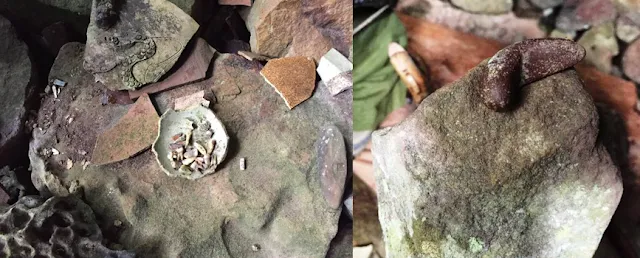Tracing the Footsteps of the Krayan River Civilization: Artifacts Believed to Be from the Stone Age Discovered
As senior writer Masri Sareb Putra aptly puts it, this land was created by God "with a smile," a phrase that captures its extraordinary natural beauty and wealth. But Krayan's allure goes beyond its stunning landscapes; it holds a deep and fascinating history.
In the valley of the Krayan River, now part of Nunukan Regency in North Kalimantan, archaeological finds and artifacts reveal a civilization that has been significant since ancient times.
Ancient technology and stone artifacts
The indigenous people of Krayan have passed down the skill of crafting iron tools through generations, originating from the Stone Age. Examples of this craftsmanship include tools like the belikung and yae found in Long Padi village.
Despite being made of iron, these tools have the same shape and function as those used by their ancestors thousands of years ago. This continuity shows that the skill has remained pure and untainted by external influences.
In Long Mutan village, ancient stones known as "yung" reveal another aspect of this heritage. These stones, shaped like mortar and pestle, were likely used to store water for household needs. Alongside these, the Tabau stone stands out as a remarkable artifact.
 |
| Artifacts, shards of ceramics, and relics from the ancient Batu Sicien, Tang Paye, Krayan burial grounds. Evidence of civilization has been present here since ancient times. Photo credit: Author. |
This stone, which serves dual purposes—as a solar marker and a seat for the observer—demonstrates the sophisticated agricultural system of the Krayan people.
By following the sun’s position, they could determine the best times to clear land and plant crops, showcasing a deep understanding of traditional farming cycles.
Rice cultivation and organic farming
The rice cultivation system in Krayan, which integrates the use of buffaloes, is an excellent example of an age-old farming technique.
Local elders, particularly those in their seventies, claim that this method has been in use since time immemorial and is a cultural legacy that wasn’t imported from elsewhere. The Adan rice, a local variety, thrives here with a unique aroma and quality unmatched by similar rice varieties grown in Malaysia or Brunei.
This organic farming method, avoiding chemical fertilizers, proves effective in maintaining soil quality and crop yield. There are three known varieties of Adan rice: white, black, and red, each with its local name—pade adan buda, item, and sia.
The craft of blacksmithing in Krayan is another crucial element of their cultural heritage. The local blacksmiths, or empus, are renowned for their skill in making parang, mandau, spears, and other farming tools. Their traditional techniques involve burning charcoal and forging iron in a hot ember, shaping it to meet specific needs.
One prominent blacksmith, Balang from Tang Payeh village, proudly upholds skills passed down through his ancestors, highlighting the importance of this craft in daily life and cultural identity.
Historical legacy and cultural treasures
Additional historical remnants, such as ancient graves at the base and summit of Batu Sicien hill, provide valuable insights into past life and beliefs.
Here, fragments of urns, beads, necklaces, bracelets, and ancestral bones have been found, revealing how the Krayan people honored and preserved their ancestors, storing these important items in safe, inaccessible places.
Amidst all this cultural and historical richness lies the Borneo rainforest, an extraordinary ecosystem that is vital to the global climate and biodiversity.
This rainforest, which envelops Krayan, supports an incredible array of flora and fauna and plays a crucial role in maintaining ecological balance.
The presence of this rainforest not only provides direct resources for the Krayan people but also offers a broader context for understanding their relationship with and management of their environment.
The Borneo rainforest surrounding Krayan is a silent witness to the long history of human adaptation and stewardship of this ecosystem over millennia.
As we explore and learn about Krayan’s cultural and historical heritage, it is also essential to appreciate and protect the natural wonders that frame it. In doing so, we celebrate not only the ancient cultural and technological achievements but also commit to preserving the vital biodiversity of our planet.
Krayan, with its blend of historical, cultural, and ecological treasures, offers a rich and vibrant narrative that connects the past with the future, weaving a harmonious story that we must cherish and protect.
-- Rangkaya Bada







